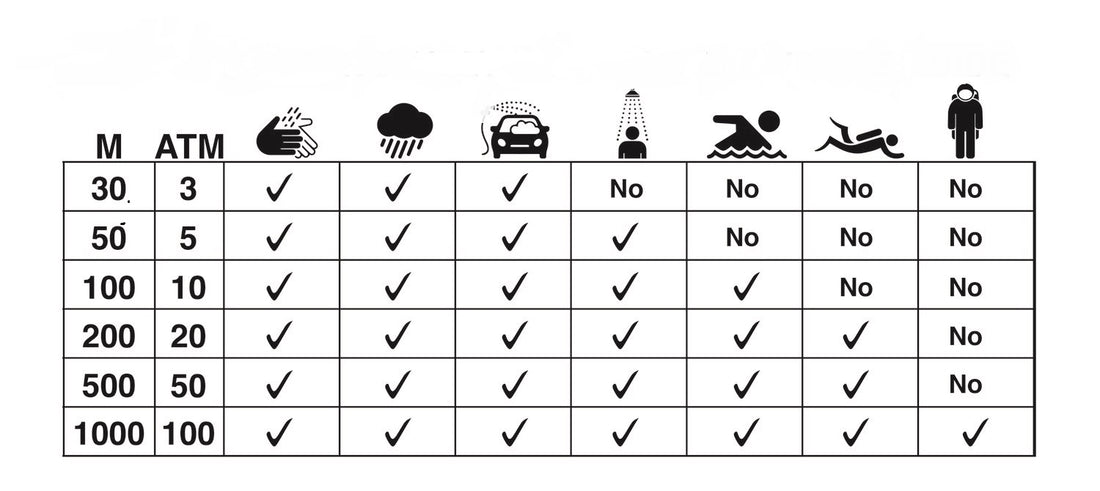The Basics
A watch marked with 50 meters on the dial or case back doesn't mean it can be used diving to a depth of 50 meters. The rating refers to the static pressure it can withstand. The pressure arises when it is moved under water when swimming, the pressure on the watch varies, and can cause seals to fail, and water to enter the watch. Most water resistant watches are not designed for prolonged active use in water.
For swimming and diving, there is a specific range of watches that are clearly marked as 200 - 1000M, which means they are rated for use underwater with additional durability and legibility criteria for use underwater in addition to the water resistance, these watches have a screw down crown.
When using the watch in and around water, do not pull out the crown to change the time, and if the watch has a screw down crown and pushers, ensure these are firmly closed before submerging the watch. Please note, that exposure to water may affect the life span of a leather strap, as such this should be avoided.
Water resistance is stated as a depth (ATM or Meters) this means that it has been tested in a laboratory to with stand a static pressure for a short period only at the stated depth. The actual water pressure on the watch during use is greater than the static pressure. Sudden and rapid changes in pressure, such as diving (even shallow diving) into a pool or the force of plunging your arm into the water while swimming, will stress the gaskets for a fraction of a second. If the gaskets are not up to specification they may rupture and cause water to enter the watch.
As the watch ages the seals begin to erode and will not maintain the same water resistance levels. Certain chemicals in water can damage the watch seal as well as perfumes, aerosol sprays and other cosmetics.
Watches should be tested for water resistance every year and gaskets replaced as necessary to maintain water resistance.


